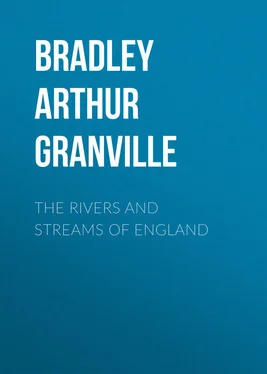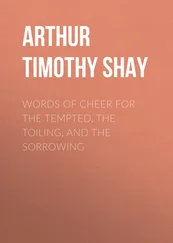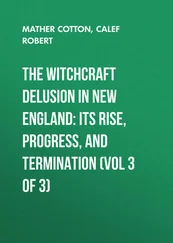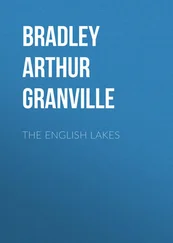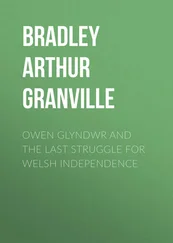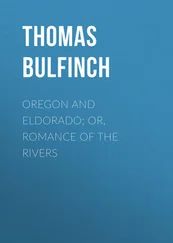Arthur Bradley - The Rivers and Streams of England
Здесь есть возможность читать онлайн «Arthur Bradley - The Rivers and Streams of England» — ознакомительный отрывок электронной книги совершенно бесплатно, а после прочтения отрывка купить полную версию. В некоторых случаях можно слушать аудио, скачать через торрент в формате fb2 и присутствует краткое содержание. Жанр: foreign_language, foreign_antique, foreign_prose, Путешествия и география, на английском языке. Описание произведения, (предисловие) а так же отзывы посетителей доступны на портале библиотеки ЛибКат.
- Название:The Rivers and Streams of England
- Автор:
- Жанр:
- Год:неизвестен
- ISBN:нет данных
- Рейтинг книги:3 / 5. Голосов: 1
-
Избранное:Добавить в избранное
- Отзывы:
-
Ваша оценка:
- 60
- 1
- 2
- 3
- 4
- 5
The Rivers and Streams of England: краткое содержание, описание и аннотация
Предлагаем к чтению аннотацию, описание, краткое содержание или предисловие (зависит от того, что написал сам автор книги «The Rivers and Streams of England»). Если вы не нашли необходимую информацию о книге — напишите в комментариях, мы постараемся отыскать её.
The Rivers and Streams of England — читать онлайн ознакомительный отрывок
Ниже представлен текст книги, разбитый по страницам. Система сохранения места последней прочитанной страницы, позволяет с удобством читать онлайн бесплатно книгу «The Rivers and Streams of England», без необходимости каждый раз заново искать на чём Вы остановились. Поставьте закладку, и сможете в любой момент перейти на страницу, на которой закончили чтение.
Интервал:
Закладка:
Upton, a little town of some importance in the more primitive times of Severn navigation, has now scarcely anything but a bridge and small market to live upon. In the churchyard and predecessor of the present abandoned and conspicuous Georgian church was fought a desperate skirmish between the Scots and Fleetwood’s vanguard, just before the last battle of Worcester. Approaching Tewkesbury the river runs out into a wide expanse of meadow land, and through this, under the walls of the beautiful old town with its superb Abbey church rising conspicuously above its banks, Shakespeare’s Avon, having now run its course by Warwick, Stratford, Evesham, and Pershore, rolls its classic waters to their confluence.
Tewkesbury has some claim to be the most picturesque of the Severn towns, though lying absolutely upon the flat. It is small, unsmirched by any industry, and undoubtedly contains in its two long streets a greater proportion for its size of really good sixteenth and seventeenth century houses than any of its neighbours on either Severn or Avon, rich beyond measure in this respect as both these valleys are. Then the Abbey church alone would make a town famous. To dwell upon this imposing pile, practically a Cathedral, is here out of the question. Its massive Norman tower with its wealth of rich external arcading is one of the finest in England. Its long nave with vaulted roof resting upon massive cylindrical Norman pillars is of scarcely less renown. Its aisles and transepts, choir and chapels, its pointed windows with their old stained-glass, its many monuments, and above all its superb west front, make a subject almost foolish to touch upon in half a page. One may state, however, that its lay founder was that celebrated Robert Fitzhamon, Earl of Gloucester, who in the time of Rufus added to his earldom by a romantic adventurous exploit, well remembered in Wales, the province of Glamorgan. His body lies, too, where it should lie, in his own abbey, beneath an elegant chantry raised nearly three centuries later to his memory by a pious abbot.
It would be ill omitting, however space may press, all mention of the battle of Tewkesbury, when on May 4, 1471, the Yorkist forces under Edward the Fourth encountered the Lancastrians under Queen Margaret outside the town in the final battle of the long Wars of the Roses. The latter were defeated with prodigious slaughter; a place near Severn’s bank being still known as the Bloody Meadow . But the slaughter was not confined to the battle: the Lancastrian fugitives, when all was long over, were hunted and hounded to death, and with their chief, who had sought sanctuary in the Abbey, were dragged in great numbers to the scaffold. After this a solemn thanksgiving was held in the Abbey by the bloodthirsty victor, whose notions of a benignant deity, like most of his kind in those pitiless days, was merely the God whom he fancied had interfered in his favour.
Swishing silently onward between its high, monotonous banks of red earth and green tufty turf and unaspiring willows; stirred perhaps once a day by a trail of steam-dragged barges, but otherwise noiseless always, unless for the occasional plunge of a fish on its reddish-brown surface, the Severn rolls towards Gloucester through a fat and
teeming country. Peaceful hay meadows of ample acreage, astir but for a week of June, save when some winter flood rolling over them makes for their yet greater silence. Towering elms and yet older oaks, following some flood ditch or hedgerow along the river’s edge or across the flat valley, which give a certain sense of dignity and opulence to this part of the Severn’s course, and not least when a summer wind is ruffling their thousand leaves and curling over these great seas of mowing grass. Farms and cottages shrink backward a couple of fields’ length from the river-bank on to the edge of the upland for obvious and sufficient reason. And so by Deerhurst with its part Saxon church and wholly Saxon chapel, by Apperley Court and Ashelworth ferry to the outskirts of Gloucester. Here the navigation of the river, helped by a canal cut across to Sharpness Point 18 miles below, assumes an ocean-going character and considerable importance for small ships. The well-known “bore” or tidal wave rushes up the Severn periodically, often achieving the height of 9 feet and a speed of 14 miles an hour, and special embankments have been made below Gloucester to preserve the land from its attacks. When the Severn begins to open out into wide watery flats, and below Gloucester to take on the muddy qualities of a tidal river, there is little occasion to follow it. The general outlook, however, during the last forty-mile stretch of the Severn, is worthy of its fame, for on both sides the uplands spread back in deep lofty ridges. The Cotswolds upon the one hand, with Mayhill and the Forest of Dean upon the other, give character and interest even to the shining flats of salt marsh, sand, and mud, through which the Severn, from any height, can be seen coiling like a serpent to meet the Wye, and with the later advent of the Avon to merge into the Bristol Channel.
But Gloucester is the real port of the Severn, a clean and pleasant city, and like Worcester has two long main streets meeting where an ancient cross stood, and still in name stands; for the heart of the city, unlike the other, is a mile from the Severn as well as lower lying, and its navigation is effected by canals. As an historic town in the Middle Ages Gloucester counted for much, its earldom carrying for many reasons extraordinary power, and its situation on the edge of the Welsh Marches, and on the lowest bridge of the Severn, having alone a significance that can scarcely be realised without some understanding of the military and political importance of this corner of England and Wales before the Wars of the Roses. Centres of influence shift, and when the archer and the man-at-arms under the Clares and Mortimers ceased to be a potent factor in English political life, the country between and about the Severn and the Wye, the original home of English archery, lost its peculiar significance and took rank by mere geographical and commercial considerations. In the Civil War, however, Gloucester came again to the front. Its stubborn retention by the Parliamentary party in a Royalist country, and its defence by Massey, entitles it to rank with Royalist Worcester as among the most conspicuous centres of strife in that distressing conflict. But strangers nowadays only visit Gloucester to see the Cathedral – an expedition well worth the making. Belonging to the middle group of cathedrals in size, this one is chiefly celebrated for its beautiful tower and cloisters, both of the Perpendicular period. Most of the nave, however, retains the original Norman character in piers and arches with exceptional grandeur of elevation; elsewhere it is much obscured by Perpendicular casing. Gloucester boasts also one of the four eleventh-century crypts and the largest east window in England, still containing a good deal of the old painted glass. Originally a Benedictine monastery, the burial within its walls of Edward the Second, murdered at Berkeley Castle near by, and afterwards held as a martyr, brought pilgrims, money, and additions to the church, which became the Cathedral of the new See of Gloucester, cut off from Worcester by Henry the Eighth. A fragment too of Llanthony Abbey, the twin sister, though in fact the unfilial daughter, of that stately ruin, that other Llanthony in the Welsh vale of Honddu, still stands amid the modern litter of the docks.
CHAPTER II
THE WYE
IF the Severn under its infant name of Hafren leaps towards such modified civilization as Llanidloes and the lonely trail of the Cambrian railway implies, amid solitudes profound, the Wye, though running even longer in the wild, has the company almost from its source of that ancient coach-road that in the good old stay-at-home days took even persons of condition on their wedding tours to Aberystwith. It was a wild and long way though, and its solitudes must have struck something like terror into the hearts of a Midland or East Anglian squire of the Regency period, getting outside the hedges as it were for the first time in his life, and looking possibly for the only one, upon actual mountains and tumbling streams. The Severn running north-east, and drawing mainly on the fountains of North Wales in its way to Welshpool and Shrewsbury, taps another country from the Wye. The latter is soon swollen into quite a large river by many lusty affluents from one of the wildest and most prolific watersheds in England or Wales. Birmingham, some of us may regret, has already discovered and laid this last under tribute. London engineers have had it all surveyed this ten years, and some day it is to be feared London will make it a burning question. The ordinary Londoner of intelligence, however, knows nothing about it outside possibly the path from Aberystwith to the top of Plinlimmon and back. Of its great lonely heart, tuneful only with the noise of waters, the bleat of sheep, and the plovers’ cry, of its romantic girdle of crag and wood, of little white-washed sycamore shaded homesteads and rude hoary shrines of British saints through which these bog-fed torrents break, the outer world knows absolutely nothing at all. Here, however, are about 600 to 800 square miles of more continuously wild upland than anything even in North Wales, all lying in a block, to which the counties of Montgomery, Radnor, Brecon, Cardigan, and Caermarthen each contribute a slice. A land penetrated by no roads south of the Upper Wye, though pricked around its edges by rough and short-lived arteries
Читать дальшеИнтервал:
Закладка:
Похожие книги на «The Rivers and Streams of England»
Представляем Вашему вниманию похожие книги на «The Rivers and Streams of England» списком для выбора. Мы отобрали схожую по названию и смыслу литературу в надежде предоставить читателям больше вариантов отыскать новые, интересные, ещё непрочитанные произведения.
Обсуждение, отзывы о книге «The Rivers and Streams of England» и просто собственные мнения читателей. Оставьте ваши комментарии, напишите, что Вы думаете о произведении, его смысле или главных героях. Укажите что конкретно понравилось, а что нет, и почему Вы так считаете.
